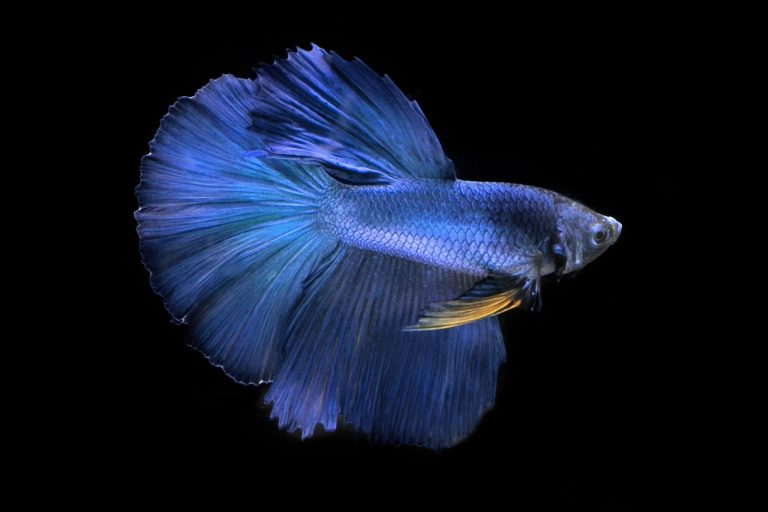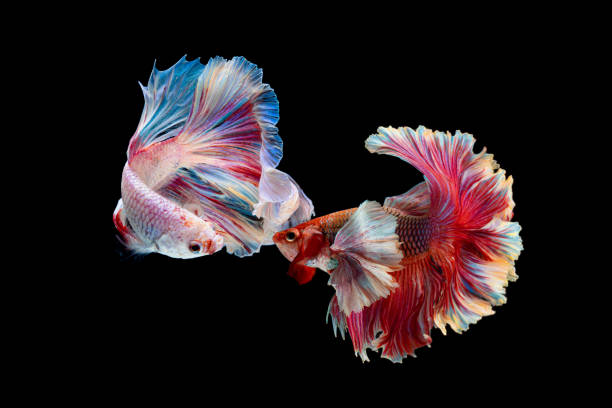Introduction
Betta fish, renowned for their brilliant colors and captivating personalities, have captivated aquarists for centuries. Among the stunning hues these fish flaunt, the shades of blue and red stand out prominently. In this comprehensive guide, we will delve into the mesmerizing realm of betta fish blue and red varieties. From their origins and unique coloration to care essentials and breeding insights, we’ll cover everything you need to know to provide a vibrant and thriving habitat for these aquatic marvels.

Betta Fish Blue and Red: A Kaleidoscope of Colors
The betta fish blue and red varieties epitomize the sheer diversity of colors nature can bestow upon aquatic creatures. Their radiant appearance is the result of years of selective breeding, resulting in an array of captivating shades that range from deep sapphire blues to fiery crimson reds. These colors are further intensified by the iridescent scales that shimmer like jewels underwater.
Origins and Evolution
The journey of betta fish blue and red varieties begins in the lush rice paddies and slow-moving waters of Southeast Asia. Their scientific name, Betta splendens, translates to “beautiful warrior,” a fitting description for their captivating appearance and territorial behavior. Native to countries like Thailand, Cambodia, and Vietnam, wild bettas are often drab in comparison to their domesticated counterparts. It was the passion of breeders that led to the development of the vibrant blue and red hues that are now synonymous with betta fish.

Distinctive Features and Varieties
Betta fish blue and red varieties come in a plethora of subtypes, each with its own unique features and charm. Some of the most sought-after variants include:
- Royal Blue Betta: Characterized by deep and rich blue tones, these bettas exude elegance and regality. Their striking coloration is often complemented by delicate fin patterns that further enhance their appeal.
- Ruby Red Betta: The embodiment of passion and intensity, ruby red bettas showcase shades ranging from velvety crimson to fiery scarlet. Their bold colors make them a favorite among aquarists.
Setting Up the Perfect Habitat
Creating an ideal environment for your betta fish blue and red companions is essential for their well-being and vibrancy. Here’s a step-by-step guide to setting up their habitat:
- Selecting the Tank: Opt for a spacious tank, preferably with a minimum capacity of 5 gallons. Larger tanks provide more stable water parameters and room for decorations.
- Water Conditions: Maintain a temperature between 78-80°F (25-27°C) and a pH level around 6.5-7.5. Use a reliable heater and thermometer to ensure consistency.
- Filtration and Aeration: Install a gentle filter to maintain water quality. Betta fish prefer calm waters, so ensure the filter’s flow isn’t too strong. Aeration can be achieved through an air stone or sponge filter.
- Substrate and Decor: Use fine-grain substrate to mimic their natural habitat. Add silk or live plants, caves, and hiding spots to create a comfortable and stimulating environment.
- Lighting: Provide soft and diffused lighting, avoiding harsh direct light. This helps reduce stress and promotes their natural behavior.
Feeding and Nutrition
Offering a balanced and nutritious diet is crucial for the health and vitality of betta fish blue and red varieties. A diet comprising high-quality betta pellets, supplemented with occasional treats like frozen or live foods, ensures optimal nutrition. Overfeeding should be avoided to prevent obesity and maintain water quality.
Breeding Insights
Breeding betta fish blue and red varieties can be a rewarding yet intricate endeavor. Follow these steps for a successful breeding experience:
- Conditioning: Separate male and female bettas and feed them a diet rich in protein to enhance their readiness for breeding.
- Introduction: Introduce the female to the male’s tank, closely monitoring their interactions. The male builds a bubble nest to signify his readiness.
- Spawning: Once the male’s nest is prepared, he’ll initiate the courtship dance. The female releases eggs, which the male fertilizes and places in the bubble nest.
- Aftercare: After spawning, promptly remove the female to prevent aggression from the male. The male guards the nest and tends to the developing eggs.
- Fry Care: Once the fry hatch, feed them infusoria or specialized fry food. As they grow, transition them to finely crushed pellets.
Frequently Asked Questions
Q: How do I differentiate between male and female bettas? A: Male bettas typically have longer fins and brighter colors, while females are generally smaller with shorter fins.
Q: Can I keep multiple bettas in the same tank? A: Male bettas are territorial and prone to aggression towards other males. It’s advisable to keep them separately.
Q: What’s the average lifespan of betta fish blue and red varieties? A: With proper care, betta fish can live around 3 to 5 years.
Q: Do bettas require a heater? A: Yes, bettas are tropical fish and require a heater to maintain their optimal temperature range.
Q: How often should I change the water in the betta tank? A: Aim for a partial water change of around 20-30% every 1-2 weeks to maintain water quality.
Q: Can bettas breathe air outside the water? A: Yes, bettas possess a labyrinth organ that allows them to breathe atmospheric air.
Conclusion
Betta fish blue and red varieties offer a kaleidoscope of colors and personalities that have captured the hearts of fish enthusiasts worldwide. From their origins in Southeast Asia to the intricacies of their care and breeding, these aquatic gems continue to fascinate and inspire. By providing them with an optimal habitat, proper nutrition, and the attention they deserve, you can revel in the enchanting beauty of these captivating creatures.






